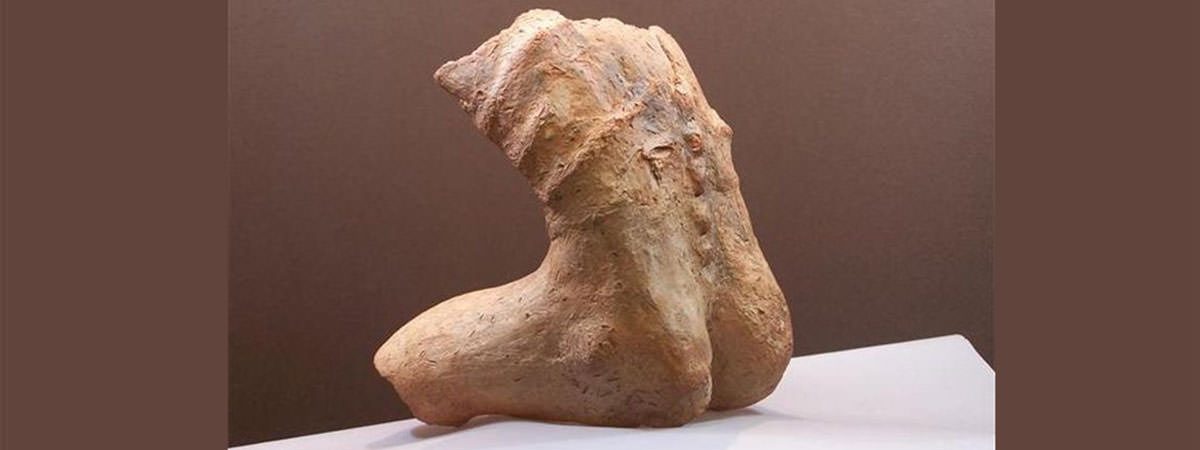Neolithic Art is art created in the New Stone Age or the Neolithic Era, which lasted from around 8,000 BCE to 2,000 BCE. Prehistoric Art is usually divided into two types: rock art and portable artworks like sculptures. The Neolithic Era saw a comeback of sculptures after a relatively quiet period in the preceding Mesolithic Era. In rock art, depictions of humans dominate representation and they became more identifiable than before. Here is an overview of Neolithic Art including its characteristics, discovery, purpose and more.
S1 – Neolithic Era
The word Neolithic is a combination of two Greek words neos (new) and lithos (stone). The New Stone Age or the Neolithic era is the last and final phase of the Stone Age. It follows the Paleolithic and the Mesolithic periods. Neolithic era is marked by the use of polished stone tools while in the previous periods the stone tools were chipped. While it various in different parts of the world, it is approximately dated from 8,000 BCE to 2,000 BCE.
The Neolithic period was a time of great change in human behavioral and cultural characteristics. So much so that it is called the Neolithic Revolution. Humans gave up the hunter-gatherer way of life in many parts of the world. Instead they cultivated crops and domesticated animals. Settled homes, towns and cities, laws, agriculture and many more things which have become a part of our lives are the result of the Neolithic Revolution.
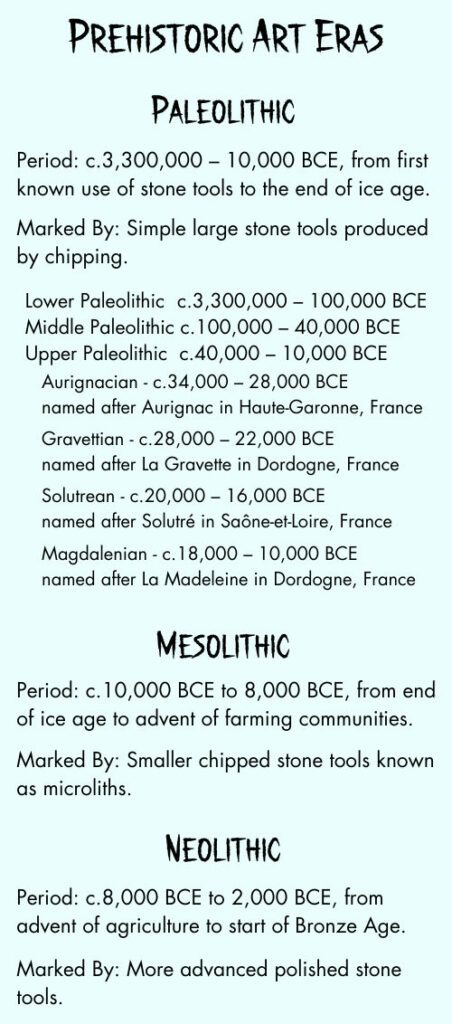
S2 – Neolithic Art Characteristics
The new arts to emerge during the Neolithic period were weaving, architecture, megaliths and pictographs that would later become writing. There are only a few statuettes found which belong to the Mesolithic era. These made a comeback in the Neolithic age with the fertility/Mother Goddess theme dominating. Animal statuettes were also made though they are often found in a broken state, perhaps indicating that they were used symbolically for hunting rituals. Moreover, sculpture was no longer restricted to carving and were now also fashioned out of clay and baked.
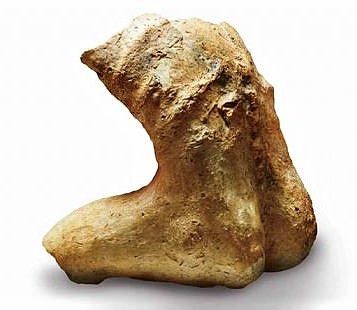
Painting was now not made in caves and cliffs, at least in Europe and Near East. Like the Mesolithic, Neolithic painting depicted more humans than animals. These humans became more identifiable unlike their Mesolithic predecessors. An example is the statue known as the Adam of Macedonia. It depicts a male torso in a seated position with a stressed spine and deeply indented abdomen. It has surprising anatomical details: well defined muscles, ribs, navel and a broken phallus.
S3 – Prehistoric Art Discovery
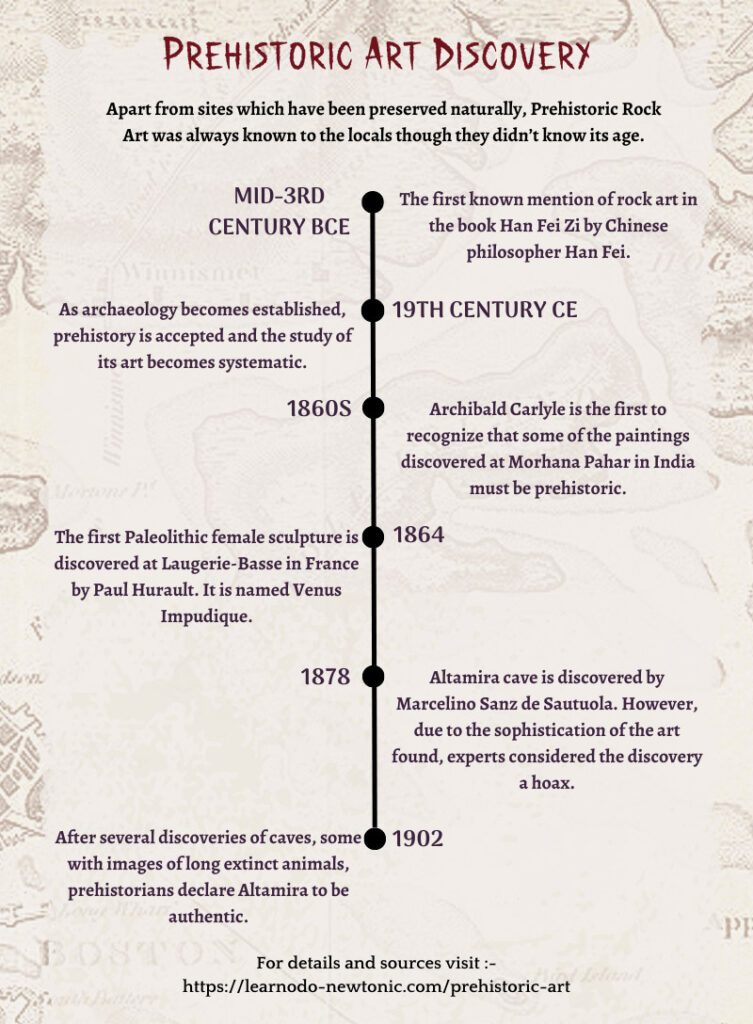
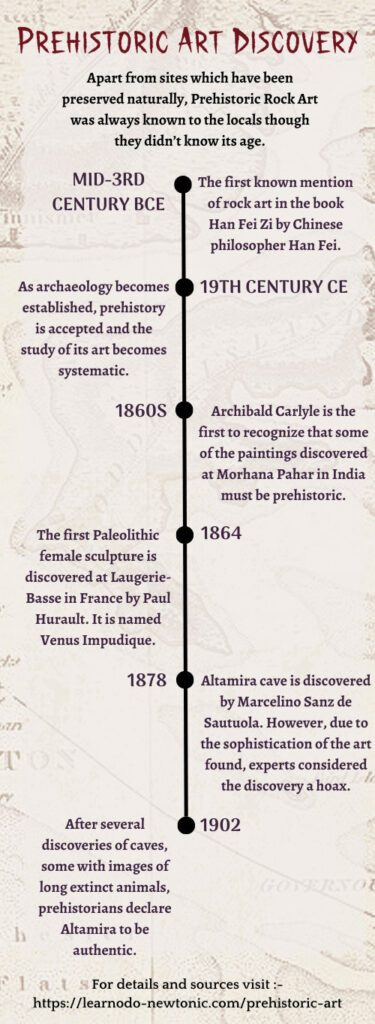
S4 – Some Important Neolithic Art Discoveries
| Discovery | Type | Discoverer | Year | Nation |
|---|---|---|---|---|
| Tassili n’Ajjer | Rock Art | Lieutenant Charles Brenans | 1930s | Algeria |
| Seated Woman of Catalhoyuk | Sculpture | James Mellaart | 1958 | Turkey |
| Westray Wife | Sculpture | Jakob Kainz | 2009 | Scotland |
S5 – Prehistoric Art Purpose
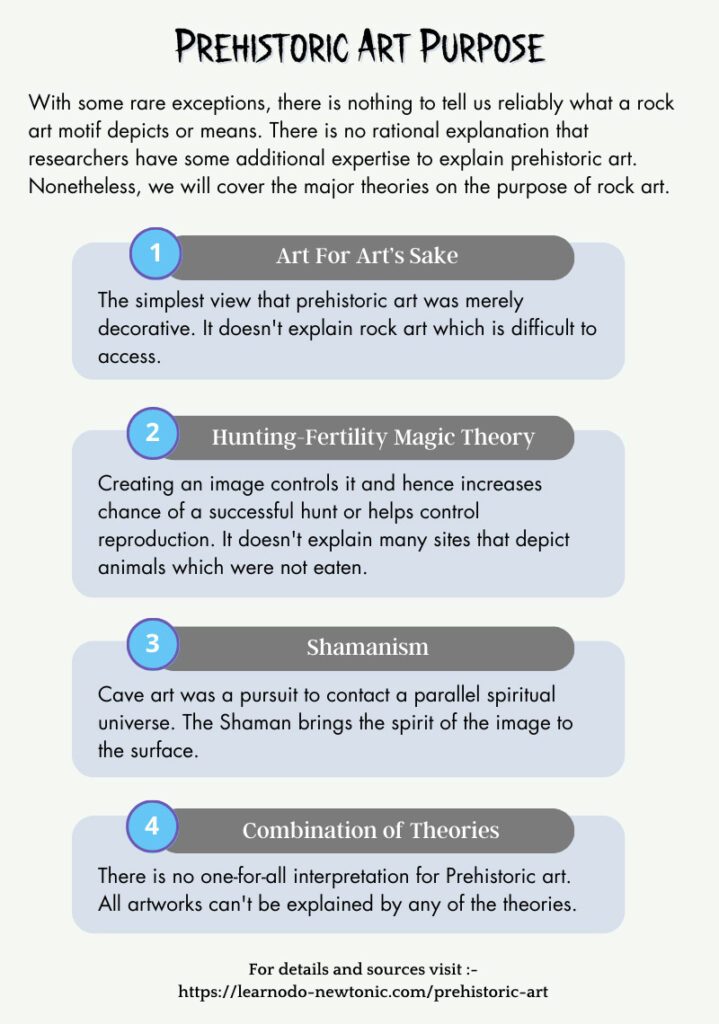
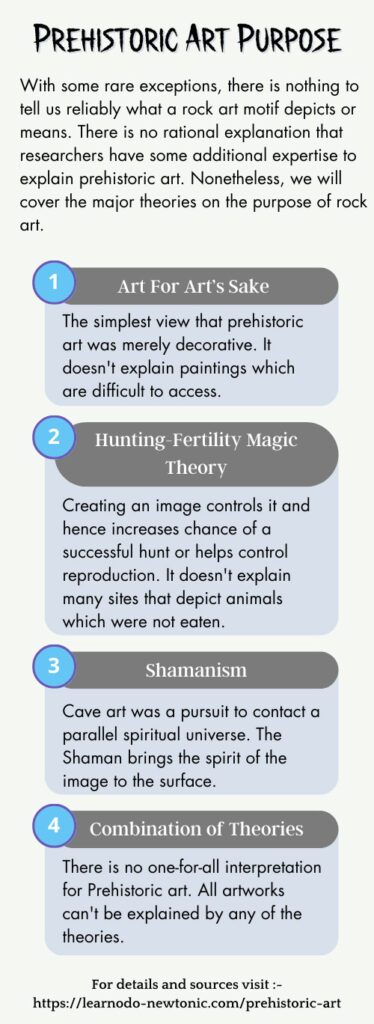
Sources:-
S1:-
“neolithic”. Merriam-Webster, Incorporated.
Buis, Alena. “Art and Visual Culture: Prehistory to Renaissance”. “Neolithic Art”.
S2:-
Esaak, Shelley. (Aug 26, 2018). “Neolithic Art”. ThoughtCo. Dotdash Meredith.
Dimitrovska, Vasilka. (Dec 6, 2012). “Adam of Macedonia”. Haemus.

